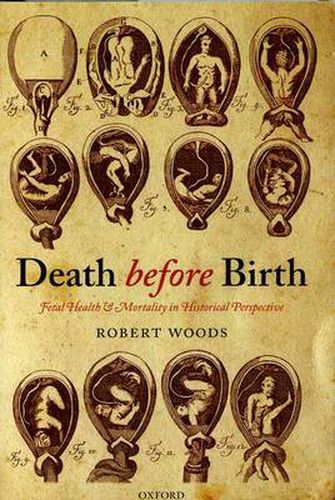Readings Newsletter
Become a Readings Member to make your shopping experience even easier.
Sign in or sign up for free!
You’re not far away from qualifying for FREE standard shipping within Australia
You’ve qualified for FREE standard shipping within Australia
The cart is loading…






Considering its importance, the history of fetal health and mortality remains a neglected area. Medical historians have tended to focus on maternal mortality and professional conflicts between midwives rather than on the unborn, while among the social scientists demographers and epidemiologists have until recently devoted most of their attention to infants and children. Death before Birth redresses this imbalance, redirecting attention to the fetus. A study of fetal health from the seventeenth century to the present day, it is the first book to offer an historical perspective on the subject and to combine both medical history and epidemiological and demographic research, using long-term and comparative perspectives, including a strong international comparative element, across both Europe and North America. The book not only provides an account of how fetal health and the risks facing the unborn (miscarriages, abortions, stillbirths etc) have changed, it also offers an interpretation of the causes, one that focuses on the role of obstetrics and the epidemiology of maternal infections. Along the way, it pays detailed attention to a host of related themes, such as varying cultural practices in the recognition of stillbirths; the age pattern of mortality risk between conception and live birth; comparative trends in late-fetal mortality and their causes; fetal mortality and obstetric care during the eighteenth, nineteenth, and twentieth centuries; and the contrasting approaches of the pathologists and ‘social epidemiologists’ to the causes of fetal death. The book concludes with a study of the ‘fetus as patient’, focusing on issues surrounding the legalization of abortion in many Western countries and the public health challenges of persistently high mortality in less developed countries.
$9.00 standard shipping within Australia
FREE standard shipping within Australia for orders over $100.00
Express & International shipping calculated at checkout
Considering its importance, the history of fetal health and mortality remains a neglected area. Medical historians have tended to focus on maternal mortality and professional conflicts between midwives rather than on the unborn, while among the social scientists demographers and epidemiologists have until recently devoted most of their attention to infants and children. Death before Birth redresses this imbalance, redirecting attention to the fetus. A study of fetal health from the seventeenth century to the present day, it is the first book to offer an historical perspective on the subject and to combine both medical history and epidemiological and demographic research, using long-term and comparative perspectives, including a strong international comparative element, across both Europe and North America. The book not only provides an account of how fetal health and the risks facing the unborn (miscarriages, abortions, stillbirths etc) have changed, it also offers an interpretation of the causes, one that focuses on the role of obstetrics and the epidemiology of maternal infections. Along the way, it pays detailed attention to a host of related themes, such as varying cultural practices in the recognition of stillbirths; the age pattern of mortality risk between conception and live birth; comparative trends in late-fetal mortality and their causes; fetal mortality and obstetric care during the eighteenth, nineteenth, and twentieth centuries; and the contrasting approaches of the pathologists and ‘social epidemiologists’ to the causes of fetal death. The book concludes with a study of the ‘fetus as patient’, focusing on issues surrounding the legalization of abortion in many Western countries and the public health challenges of persistently high mortality in less developed countries.